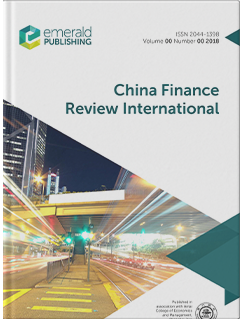Trade price clustering in the corporate bond market
IF 7.6
1区 经济学
Q1 BUSINESS, FINANCE
引用次数: 3
Abstract
PurposeIn this paper, the authors document the existence of price clustering in the US corporate bond market.Design/methodology/approachUsing a sample of 8,422,593 corporate bond trades in 2014, the authors find that over 18% (1,522,284 trades) of all bond trades end in a clustered price, defined as a price ending in 00, 25, 50, or 75.FindingsOverall, the authors find that both bond rating category and risk, as measured by standard deviation of prices, play a role in price clustering; speculative grade bonds account for the majority of clustered prices. Clustered prices are more likely to have higher coupon rates, higher prices, and higher standard deviations of price than bonds with non-clustered prices. Regardless of size, both buy and sell dealer trades with customers (relative to interdealer trading) lead to an increase in price clustering. Dealers appear to use clustered prices when purchasing from and selling to institutions and, therefore, may use a clustered price to insulate themselves from the risk of asymmetric information. Additionally, the prevalence of clustered prices for retail-sized dealer sell trades suggests that dealers exercise dealer power over retail-sized traders.Originality/valueThis paper contributes to the literature on price clustering by examining trade price clustering of corporate bonds. It is different from previous papers on price clustering in equities. Given that bonds tend to be priced off of yield, it is unusual that trade prices cluster. It also demonstrates what kind of bonds cluster and with which customers dealers trade at clustered prices. It parallels other research in demonstrating dealer power over retail-sized traders.公司债券市场的交易价格集群
目的研究美国公司债券市场存在价格聚类现象。设计/方法/方法使用2014年8,422,593笔公司债券交易的样本,作者发现所有债券交易中超过18%(1,522,284笔交易)以群集价格结束,即以00、25、50或75结束的价格。总体而言,作者发现债券评级类别和风险(以价格标准差衡量)都对价格聚类起作用;投机级债券占了聚集价格的大部分。与非聚类价格债券相比,聚类价格债券更有可能具有更高的票面利率、更高的价格和更高的价格标准差。无论规模大小,交易商与客户的买卖交易(相对于交易商之间的交易)都会导致价格聚类的增加。交易商在向机构买卖股票时,似乎使用了聚集价格,因此,可能会使用聚集价格使自己免受信息不对称的风险。此外,零售规模的交易商销售交易中普遍存在的集成化价格表明,交易商对零售规模的交易商行使交易商权力。原创性/价值本文通过考察公司债券的交易价格聚类,为价格聚类的研究贡献了文献。它不同于以往关于股票价格聚类的论文。鉴于债券往往是根据收益率来定价的,交易价格聚集在一起是不寻常的。它还展示了哪种债券聚集在一起,以及交易商以聚集的价格与哪些客户进行交易。在证明交易商对零售规模交易商的影响力方面,它与其他研究类似。
本文章由计算机程序翻译,如有差异,请以英文原文为准。
求助全文
约1分钟内获得全文
求助全文
来源期刊

China Finance Review International
BUSINESS, FINANCE-
CiteScore
12.40
自引率
1.20%
发文量
112
期刊介绍:
China Finance Review International publishes original and high-quality theoretical and empirical articles focusing on financial and economic issues arising from China's reform, opening-up, economic development, and system transformation. The journal serves as a platform for exchange between Chinese finance scholars and international financial economists, covering a wide range of topics including monetary policy, banking, international trade and finance, corporate finance, asset pricing, market microstructure, corporate governance, incentive studies, fiscal policy, public management, and state-owned enterprise reform.
 求助内容:
求助内容: 应助结果提醒方式:
应助结果提醒方式:


